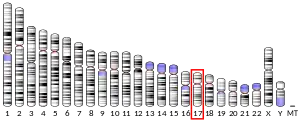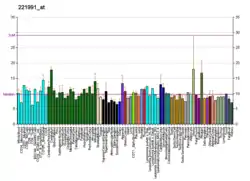| NXPH3 | |||||||||||||||||||||||||||||||||||||||||||||||||||
|---|---|---|---|---|---|---|---|---|---|---|---|---|---|---|---|---|---|---|---|---|---|---|---|---|---|---|---|---|---|---|---|---|---|---|---|---|---|---|---|---|---|---|---|---|---|---|---|---|---|---|---|
| Identifiers | |||||||||||||||||||||||||||||||||||||||||||||||||||
| Aliases | NXPH3, NPH3, neurexophilin 3 | ||||||||||||||||||||||||||||||||||||||||||||||||||
| External IDs | OMIM: 604636 MGI: 1336188 HomoloGene: 5227 GeneCards: NXPH3 | ||||||||||||||||||||||||||||||||||||||||||||||||||
| |||||||||||||||||||||||||||||||||||||||||||||||||||
| |||||||||||||||||||||||||||||||||||||||||||||||||||
| |||||||||||||||||||||||||||||||||||||||||||||||||||
| |||||||||||||||||||||||||||||||||||||||||||||||||||
| |||||||||||||||||||||||||||||||||||||||||||||||||||
| Wikidata | |||||||||||||||||||||||||||||||||||||||||||||||||||
| |||||||||||||||||||||||||||||||||||||||||||||||||||
Neurexophilin-3 is a protein that in humans is encoded by the NXPH3 gene.[5][6]
References
- 1 2 3 GRCh38: Ensembl release 89: ENSG00000182575 - Ensembl, May 2017
- 1 2 3 GRCm38: Ensembl release 89: ENSMUSG00000046719 - Ensembl, May 2017
- ↑ "Human PubMed Reference:". National Center for Biotechnology Information, U.S. National Library of Medicine.
- ↑ "Mouse PubMed Reference:". National Center for Biotechnology Information, U.S. National Library of Medicine.
- ↑ Missler M, Sudhof TC (Jun 1998). "Neurexophilins form a conserved family of neuropeptide-like glycoproteins". J Neurosci. 18 (10): 3630–8. doi:10.1523/JNEUROSCI.18-10-03630.1998. PMC 6793134. PMID 9570794.
- ↑ "Entrez Gene: NXPH3 neurexophilin 3".
Further reading
- Gerhard DS, Wagner L, Feingold EA, et al. (2004). "The status, quality, and expansion of the NIH full-length cDNA project: the Mammalian Gene Collection (MGC)". Genome Res. 14 (10B): 2121–7. doi:10.1101/gr.2596504. PMC 528928. PMID 15489334.
- Zhang Z, Henzel WJ (2005). "Signal peptide prediction based on analysis of experimentally verified cleavage sites". Protein Sci. 13 (10): 2819–24. doi:10.1110/ps.04682504. PMC 2286551. PMID 15340161.
- Clark HF, Gurney AL, Abaya E, et al. (2003). "The secreted protein discovery initiative (SPDI), a large-scale effort to identify novel human secreted and transmembrane proteins: a bioinformatics assessment". Genome Res. 13 (10): 2265–70. doi:10.1101/gr.1293003. PMC 403697. PMID 12975309.
- Strausberg RL, Feingold EA, Grouse LH, et al. (2003). "Generation and initial analysis of more than 15,000 full-length human and mouse cDNA sequences". Proc. Natl. Acad. Sci. U.S.A. 99 (26): 16899–903. Bibcode:2002PNAS...9916899M. doi:10.1073/pnas.242603899. PMC 139241. PMID 12477932.
- Hirosawa M, Nagase T, Ishikawa K, et al. (2000). "Characterization of cDNA clones selected by the GeneMark analysis from size-fractionated cDNA libraries from human brain". DNA Res. 6 (5): 329–36. doi:10.1093/dnares/6.5.329. PMID 10574461.
- Missler M, Hammer RE, Südhof TC (1999). "Neurexophilin binding to alpha-neurexins. A single LNS domain functions as an independently folding ligand-binding unit". J. Biol. Chem. 273 (52): 34716–23. doi:10.1074/jbc.273.52.34716. PMID 9856994.
- Petrenko AG, Ullrich B, Missler M, et al. (1996). "Structure and evolution of neurexophilin". J. Neurosci. 16 (14): 4360–9. doi:10.1523/JNEUROSCI.16-14-04360.1996. PMC 6578849. PMID 8699246.
This article is issued from Wikipedia. The text is licensed under Creative Commons - Attribution - Sharealike. Additional terms may apply for the media files.




